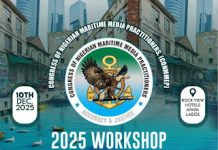In the modern digital landscape, the phrase “content is king” remains relevant — but only if the content is visible to search engines like Google. For many writers who have invested considerable time and effort into producing how-to articles that barely attract readers, the issue often lies not in the quality of content, but in its discoverability. It is no longer sufficient to simply write helpful articles; content must also be optimized to rank well on Google.
This detailed guide serves as a valuable resource for bloggers, journalists, digital marketers, and content enthusiasts in Nigeria and around the globe who are eager to create how-to articles that both inform readers and perform strongly in search engine results.
1. Selecting the Right Topic and Keyword
One fundamental truth stands firm: your content cannot rank if there is no audience searching for the topic. This is where keyword research becomes essential.
Writers should adopt the mindset of their intended readers. Consider what users are actually typing into search engines. Common searches may include phrases like “how to bake puff-puff,” “how to start a POS business in Nigeria,” or “how to edit videos on a smartphone.”
Helpful keyword research tools include:
- Google Keyword Planner (accessible with a Gmail account)
- Ubersuggest (offers both free and premium versions)
- AnswerThePublic
Alternatively, simply using Google’s autocomplete feature by typing “how to…” can provide insight into trending queries.
The ideal approach is to identify keywords with low competition but high search volume. Build your article around such phrases.
Professional Tip: Long-tail keywords like “how to start a dropshipping business in Nigeria 2025” are generally more effective than vague terms such as “start a business.”
2. Writing an Effective and Search-Friendly Headline
The headline is the first impression — both for Google and human readers. It should be:
- Clear in intention
- Compelling enough to click
- Contain relevant keywords
Compare the following examples:
- Starting a Blog? Read This
- How to Start a Blog in Nigeria (Step-by-Step Guide for 2025)
The second headline is specific, includes the keyword “how to,” references a location (Nigeria), and adds a date, making it more attractive to search engines.
Bonus Suggestion: Incorporate numbers or brackets to enhance engagement. For example: How to Start a YouTube Channel [Beginner’s Guide].
3. Structuring Your Article With SEO in Mind
Well-structured content is favored by both readers and Google’s algorithm. A properly formatted how-to article should be easy to read and visually digestible. Consider using the following layout:
- H1: Headline (typically handled by the CMS theme)
- H2: Main steps or sections
- H3: Sub-points or detailed actions
- Use of bullet points and numbered lists for clarity
- Short paragraphs of 2–4 lines
- Inclusion of images, screenshots, or video content
Envision your article like a Jollof rice recipe — every instruction should follow a logical sequence for the final result to turn out well.
4. Prioritizing Human Readability Before SEO
While it is important to cater to search engines, the ultimate goal is to engage real readers. Even well-optimized articles will falter if they are unhelpful or difficult to read.
Strive for balance by:
- Maintaining a conversational tone
- Incorporating practical examples (e.g., “If you live in Lagos and don’t have steady electricity, consider…”)
- Avoiding excessive keyword repetition by using synonyms and varied phrasing
Google’s algorithms are advanced, but they are no match for the judgment of real users.
5. Captivating Readers With a Strong Introduction
A compelling introduction should:
- Inform the reader of what to expect
- Highlight the significance of the topic
- Encourage continued reading
Sample Introduction: Looking to earn extra income from home? This article explains how to start a POS business in Nigeria — even if you have no prior experience.
The key is to provide value upfront.
6. Providing Logical, Step-by-Step Instructions
The essence of a how-to article is in its instructional clarity. Your steps should follow a logical order and be easy to understand.
Utilize action-oriented language such as:
- “Sign up for…”
- “Click the menu icon…”
- “Combine all ingredients…”
Steer clear of ambiguous advice like “go with your instincts” or “figure it out as you go.” Readers are seeking direction, not riddles.
7. On-Page SEO Optimization
On-page SEO remains a crucial aspect of getting content to rank. Ensure your chosen keyword appears in:
- The title
- The URL
- The first 100 words of the article
- At least one H2 subheading
- The meta description
- Image alt text
Additionally, link internally to related articles on your site, and externally to reputable, high-authority sources. Including a table of contents is also advised, especially for longer guides.
Example SEO-friendly URL: https://bizwatchnigeria.ng/how-to-write-listicles-that-will-surely-rank-on-google-seo/
Keep it straightforward and descriptive.
8. Including an FAQ Section to Capture Snippet Opportunities
With Google prioritizing “People Also Ask” and featured snippets, incorporating a Frequently Asked Questions (FAQ) section can enhance your visibility.
Sample questions might include:
- What is the best POS machine in Nigeria?
- How much does it cost to start a POS business?
- Is the POS business profitable in 2025?
Provide concise, direct answers — ideally within 40 to 60 words.
9. Using Visual Aids to Enhance Reader Engagement
Long-form how-to content devoid of visual support can quickly lose a reader’s attention. Enhance user engagement by embedding:
- Screenshots
- Infographics
- Instructional photos
- Animated GIFs or short videos
Such media elements improve dwell time, which signals to search engines that users find your content valuable.
10. Promoting Your Article Post-Publication
Publishing an article is only half the job — promotion is equally important.
Recommended promotion strategies include:
- Sharing on platforms like Twitter, LinkedIn, WhatsApp Status, and Facebook Groups
- Submitting the article to Google Search Console
- Acquiring backlinks through guest posts or link exchanges
- Answering related questions on Quora and linking back to your piece
- Distributing via email newsletters, if applicable
Avoid the “publish and forget” approach. Instead, actively push your content to the right audiences.














